#Andre bazin
Text
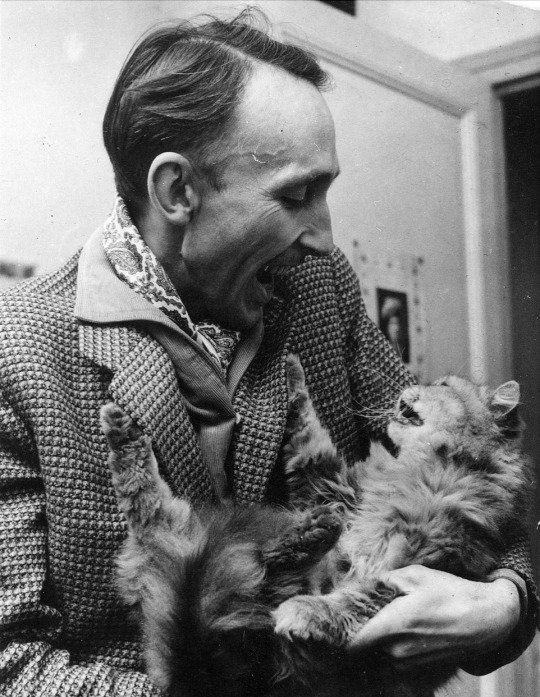
Renowned film critic André Bazin with cat friend. Source.
767 notes
·
View notes
Text

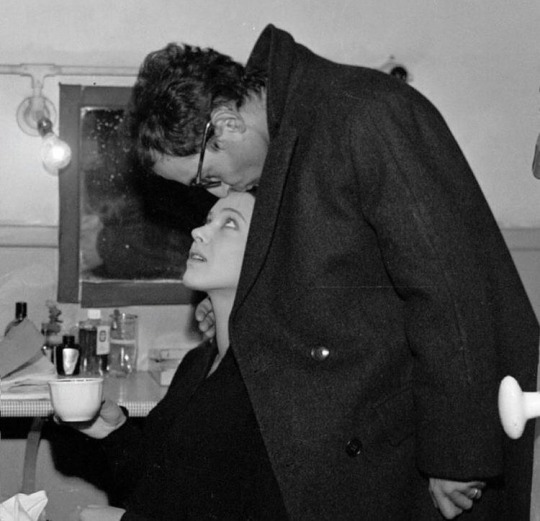


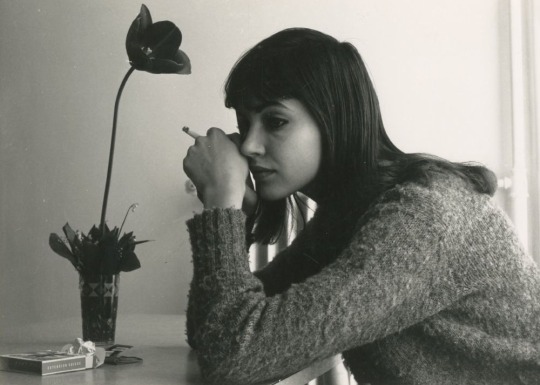

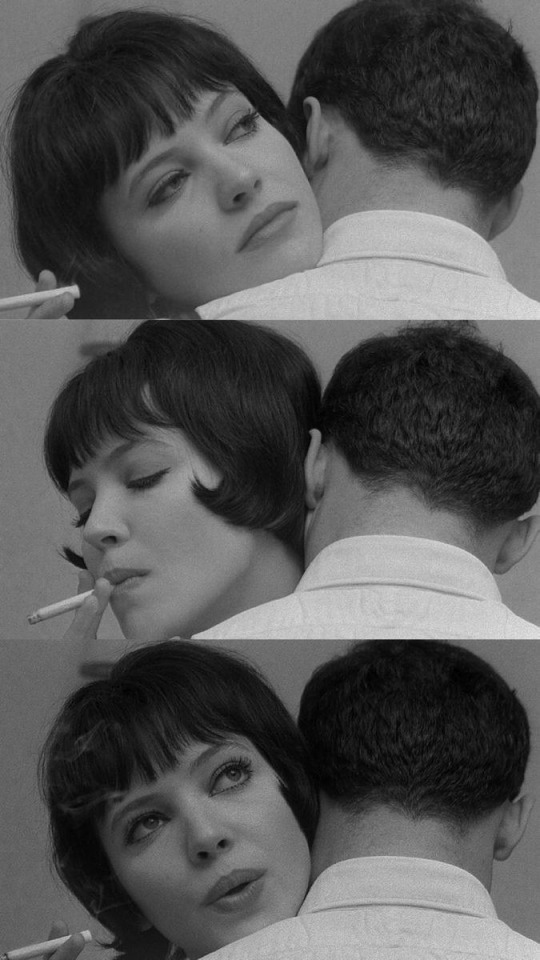
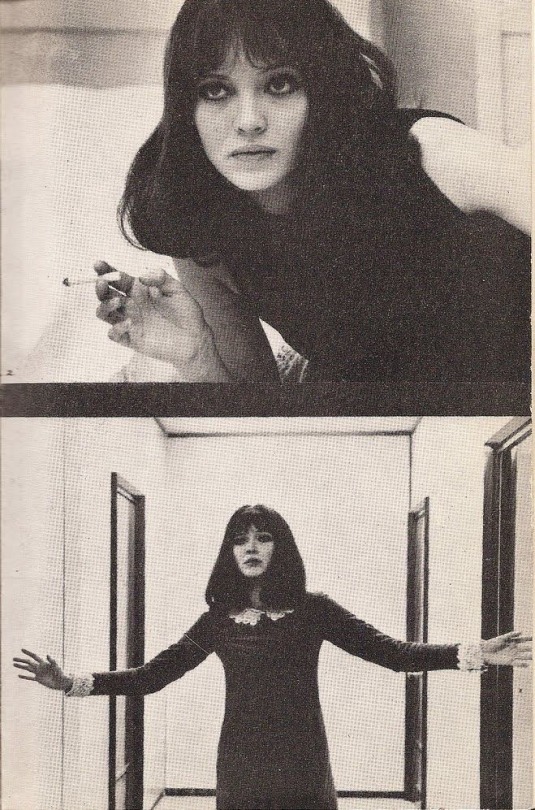

Anna Karina. Muse of the cult director of the new wave Jean-Luc Godard.
Photos from different years
#anna karina#jean luc godard#actor#film#art#movies#photography#magazine#french#french new wave#cinema#cahiers du Cinema#andre bazin#jean luc godard films#cinemetography#cinephile#french film#50s movies#60s fashion#60s film#black and white aesthetic#love
23 notes
·
View notes
Text
Gen-z are like npc this npc that. What about the subtle art of mise-en-scène?
0 notes
Text
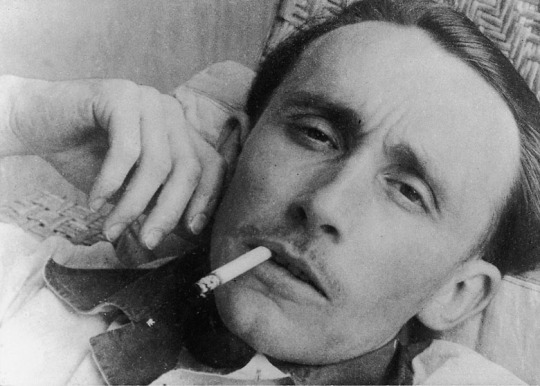
I fucking hate this man
0 notes
Quote
From François Truffaut
Paris, 25 August 1959
Dear Sir,
First, allow me to express my profound admiration for Nazarín, a film of such magnificent simplicity, logic, intelligence and beauty.
Unfortunately, I also see it as my duty to pester you: in October we will publish issue no.100 of Cahiers du cinéma. This is an important occasion for us and we would be sorry if your name were not to appear on an index that will include many of Cahiers’ film-maker friends: Renoir, Becker, Bresson, McLaren, Cocteau, Tati, etc. Doniol-Valcroze, who has just made his first feature, will write a historical review of Cahiers; and we will publish the illustrated script of the documentary Bazin wanted to make about Roman churches.
Your contribution could be a message, a drawing, an imaginary interview, a letter, a polemic, anything; the main thing is that we should not celebrate this anniversary without you.
We need to finalize submissions on 15 September, so time is short…
Forgive me for interrupting your work (or rest) and be assured of my loyalty and devotion,
François Truffaut
Cahiers du cinema
146 Champs-Élysées
Jo Evans & Breixo Viejo, Luis Buñuel: A Life in Letters
#jo evans#breixo viejo#luis bunuel: a life in letters#luis bunuel#francois truffaut#jacques doniol-valcroze#andre bazin
0 notes
Text
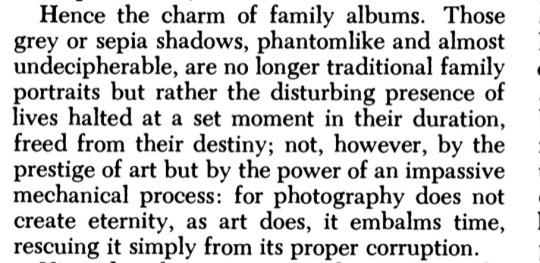
literally the innate uncanniness of media. the horror built into the desire for media to act as memory prostheses. rest in peace andre bazin u wouldve loved current ai + cgi discourse
#the ontology of the photographic image by andre bazin. if u even care#i keep returning to this essay as i write my thesis and its just OUGHHH literally EMBALMS time.#he writes so so so beautifully like his essays are intoxicating to me#i 💖 media horror.#journal#words
12 notes
·
View notes
Note
Hi!
I am the Ferris bueller anon and I have more questions for you but also an answer!
So, bc you are always so kind to me, I will tell you why maybe people are a bit intimidated by you, or at least why I feel like that.
You really have a lot of good and strong opinions of films, you know a lot about them and really your passion makes you honour and I love it! I discovered many good movies thank to you and sincerely I am so grateful.
So when it comes to talk about "lesser" movies or something I know you don't really dig it's difficult bc it's like going to h&m with Christian Dior. I know I can like and enjoy my silly 2€ t shirt but I feel a bit ashamed doing this with you. Obv it's all in my head and sincerely it doesn't affect me much and it shouldn't affect you at all. So this is my explanation, if it does make sense. Don't feel bad, it isn't that you are intimidating in a bad manner, it's just I respect you too much to subject you to my silly opinions/movies.
Albeit sometimes movies are just that, entertainment, and they are good all the same.
So! Now my questions😎
1) how can I learn more about movies? Like, theory about it, bc while I watch them I usually prefer to experience them without thinking about them too much a part from obvious things and while the "if I like it it is good" goes well for certain things, I would love to enjoy more the technical aspects of them and more.
2) what do you think about Ozon? I know his last movie will be out soon and albeit I haven't seen anything about it I know you weren't really too happy about it. I have seen Frantz and The double lovers (I hope the title is right) and they fucked me in two different ways (a emotional way and a fucked up one) but I don't really know the difference, from a certain point, from this makes me emotional so it's good and I like it but it really isn't all of that.
3) Which are your favourite directors RN?
4) this is really not a question but I have begun Reflections inside a golden eye and the scene where Liz Taylor whipped her husband... it really lives in my mind rent free, no, I am its sugar daddy and I am paying it for being here. I just want to marry her. And I am not into bdsm at all.
The message is too long and I hope not too much tmi. Thank you for your time and have a wonderful day!
i hear you, and i think you're sweet to say so, plus i respect you for coming back and actually answering the question because most people never do. it's funny because like..... i think i am silly, too, and have "silly" (or i guess....... not serious auteur theory/arthouse) movies i love dearly. i own 21 jump street on dvd. i watch ron howard's the grinch AND all the yugioh movies on a regular basis. i watched the downton abbey movie in a theatre the other month. i have a biiiiiiig poster of in & out 1997 in my room. like you, i contain so many multitudes, but i just don't talk about them as much online for no particular reason. so.... lesbiancolumbos! they're just like you! it's okay to be intimidated (i have people who intimidate me too) but just tell yourself i'm simply a (wo)man and show me your very cool t-shirt.
to be honest, i think a lot of cinephile culture is so stuffy. i would rather be talking about shit like ferris bueller than argue andrew sarris to death.
BUT! to your questions.
i think the book you want to start with is film art: an introduction by david bordwell and kristin thompson. this is like, THE book film school students get their first semester. it's about the aesthetic language of film! go to this google doc and CTRL-F and type in bordwell, and you'll find it in the first section. then type in bazin, and you'll find a couple of links called what is cinema? grab those two. andre bazin......... sigh, so like, i am not a huge bazin fan BUT he is one of the most notable and influential film theorists and i DID get something out of his work, so you should at least take a look. the best way to shape your analytical skills, in my opinion, is to read AND watch a lot. the problem i have with a lot of film students when i was in school a million years ago was that everyone was reading this theory but never actually watching anything, so of course the theory wasn't clicking. i did go to film school but a lot of my taste and approaches to film i consider self-taught because when i graduated school i just. sat and watched turner classic literally all day long, noticed which films and screen presences i liked most, and continued to watch that. finally i picked up on recurring motifs, themes, etc. that doc has a lot of books for you to read and you can always swing by for more recs from me, but it's just like any other skill. you just gotta keep trying to do it until it clicks for you.
ozon..... so i am harsh on him because he's a man and he's made a couple of films i really hated, lmao, but i know most people like him! and i don't fault them for this! i am very aware that this is a "me problem". i just can't not roll my eyes at this man seeing a movie about like, the very specific ways women engage in toxic relationships with other women, and go omg, but what if..... they were men..... like i can't. i will say that i'm happy you had such emotional responses to those films, because that to me means they're worth a second look, and i'm willing to give this man more chances because frantz looks good! and i do still want to see 8 women. so who knows. maybe he will click for me one day... i have famously done 180s on films/filmmakers i used to hate and now love.
i'm not sure if you mean my favorite filmmakers working currently or just in general, so i'll do both. i consider my favorite filmmakers to be elaine may, chantal akerman, agnes varda, john cassavetes, jane campion, lynn shelton, stanley donen, kelly reichardt, billy wilder. aside from kelly and jane, the only two alive filmmakers in this list (sidenote, but i cannot believe it has been two years since lynn died) i think some of the most exciting filmmakers working right now are christian petzold, jeff nichols, asghar farhadi, melanie laurent, barry jenkins, greta gerwig, jennifer kent. i am desperate for another movie from dee rees, kirsten johnson, chinonye chukwu, desiree akhavan, ryan coogler, maren ade, and maria schrader.
putting a pin in your reflections in a golden eye reflection because it is tentatively my pick for summer under the stars on marlon brando's day (there are a couple of to be announced screenings and if they screen the wild one i will switch it 😔) but let's have this discussion after i've watched it in august. :)
have a wonderful day! hope i didn't talk your ear off 💛
#asks#i also wanted to say that.... in recent years i have had to put up some major boundaries. and make myself much more unavailable.#due to some serious overstepping on here. so that might also explain why i come across as more cool and distant than i want.#but my point still stands! i am always here to (respectfully) chat
7 notes
·
View notes
Text
Digital Media: Sources and Significance | Critical Analysis
Bazin, A. and Gray, H. (1960) ‘The Ontology of the Photographic Image’, Film quarterly, 13(4), pp. 8–9.
Andre Bazin was an extremely renowned and highly influential film critic and theorist of French origin. In one of his most well known articles titled “Ontology of the Photographic Image”, he talks about the intricacies concerning the nature of Photography as well as its connection to traditional art and Painting. This publication is often said to be highly influential in propelling forward countless other contributions towards the study of Photography and is also known as a primary influence within contemporary photographic theory.
Although it is highly influential, the article is often misinterpret by critics, who often tend to overlook Bazin’s perspective and reject it outright.
In his discussion, Bazin explains what the connection between a photograph and its subject is. He says that a photograph can flawlessly capture an object in both space and time, essentially preserving it for eternity. He says that paintings are more subjective in nature, especially in terms of interpretation, whereas photography gives us an unaltered re-creation of reality directly derived from the object itself, freezing it in time.
According to Bazin, a photograph aims to give us an unaltered view of the object, and presents it perfectly to the viewer without any human agency and influence of time. In this way, the artistic qualities of the photograph cannot be altered by the artist, making nature the true artist in a sense. He explains how there is an intrinsic need in humans to make representations. He further elaborates on this idea by giving the example of the Egyptians and the creation of mummies, the purpose of which is to provide a defence against the passing of time.
Bazin says that when it comes to the ability to create resemblance, painting is much inferior compared to photography. According to him, a photograph possesses a very unique power of believability, which convinces the viewer of the object’s existence. Painting lacks this irrational element. Photography stands apart from art because of its ability to liberate the object from its “temporal contingencies” and mummifying it.
However, this comparison has been widely misunderstood by critics who interpret it as a criticism towards painting. Both the mediums are different from each other in their approach towards artistic expression, possessing very distinct characteristics unique to themselves. For instance: Photography does not aim to re-create what already exists in reality. Rather, it exists as a form of artistic expression and further adds to the real world or creates an interpretation of nature, often detached from reality. It creates original points-of-view which would otherwise be non-existent.
Bazin also explores the connection between photography and cinema. Cinema can be seen as a spiritual successor to photography. It possesses the same power of believability, but to a greater extent, due to its ability to capture time instead of just a single moment. Both can preserve objects but through different means.
In today’s world, photography and cinematography are very much intertwined in artistic practices. For example, Stop-Motion is an intersectional medium where objects are placed and manipulated slightly and captured. When played the frames in a sequence, it creates an effect of movement on screen.
Over the past few decades, Art and Photography have gone through significant transformations. It has started to become more and more difficult to distinguish between the two with rising popularity of Photo Editing and Digital Art. As a result there is a noticeable convergence between the mediums. Furthermore, AI technology has started to greatly influence art since the past few years. With the rise in popularity of AI art, many have began questioning its ethical implications.
Apart from that, video games is another medium which has made strides when it comes to both advancement in technology and its integration of other mediums such as photography in various games. One such game is Viewfinder, which uses photography and gamifies it to create a very a fresh experience which was never seen before. Since it doesn’t use photography in a traditional way, one could argue its take on the medium is closer to art than it is to photography.
Even though some aspects of Bazin’s argument might require adaptation in accordance to the technological developments in Art and Cinema, his ideas still remain quite foundational in film theory to this day and a lot of his points about the comparison between Painting and Photography still resonate.
Although technological advances raise questions about the indexical relationship between the photograph and reality and question the objectivity of the photographic image, digital manipulation exists in a realm of its own, separated from photography.
Understanding the process of production of the photograph has become extremely important, especially in recent times. According to Morgan, D. (2006), “for us to read a photograph correctly, we have to be aware of how it was produced, aware of its status as an indexical sign. We believe that a photograph is an accurate indication of the presence of objects in front of the camera at a past time not because of the criteria of resemblance but because we know how the image was generated” (p.447). This also further supports Bazin’s claim that photograph is primarily a mechanical process, free of human agency.
“He does not write about the photograph as an object, but about the photographic image as an analogon of reality” (Verano, L. 2022. pp. 401-423). Bazin places a lot of emphasis on a photograph’s innate ability to depict and re-create the natural world, as well as its influence in the medium of art.
At the end of the day, Ontology of the Photographic Image is extremely influential to media and film studies even to this day even though the original text is quite old. Bazin’s arguments hold up extremely well, in my opinion, and his points about the mummy complex and the psychology behind photography and its relation to human nature is an extremely interesting way to think about media. It is certainly a unique take on media and photography, one which everyone should read at least once.
Works Cited:
Morgan, D. (2006) ‘Rethinking Bazin: Ontology and Realist Aesthetics’, Critical inquiry, 32(3), pp. 443–481.
Esqueda Verano, L. (2022). There is no such thing as one realism: systematising André Bazin's film theory. New Review of Film and Television Studies, 20(3), 401–423.
1 note
·
View note
Text
Reader/ 5
ANDRE BAZIN
The Ontology of the Photographic Image
TRANSLATED BY HUGH GRAY
This essay is a prerequisite given by the teacher for the fourth section on descriptive-realist strategies. It mainly discusses the characteristics and significance of the photographic image as an art form and medium. It is pointed out that the photographic image is the process of freeing the object from the bonds of time and space and becoming a reproduction of the object itself.
I chose this because I had never thought about the origins of painting and sculpture and extended it to an aesthetic psychological and sociological perspective. That said, as the author states that life is preserved through its reproduction, then portraiture is also a form of life preservation. Photographs and photography are also a form of life preservation. What about the creation of computer games and AI is it also a form of life preservation?
0 notes
Video
youtube
Realism is Bad, Actually
Offset your carbon footprint on Wren: https://wren.co/start/zoebee The first 100 people who sign up will have 10 extra trees planted in their name!
* Description: *
We say we love "realistic" fiction like Batman, Red Dead Redemption 2, and Horizon: Forbidden West. We say we love when our characters "act like real people" and "have realistic dialogue." But it's worth asking: Are these things ACTUALLY realistic? And if not, is realism even worth trying to capture?
* chapters: *
00:00:00 - Intro: Concrete Monsters
00:04:17 - Part 1: Using Realism
00:10:34 - Part 2: Investigating Realism
00:17:27 - Part 3: Criticizing Realism
00:40:32 - Intermission
00:43:17 - Part 4: Replacing Realism
00:59:16 - Conclusion: Sounds Good
01:08:39 - Outro & Poem
* Sources: *
---Books
------“Gamic Realism”: Player, Perception and Action in Video Game Play - Hanna Sommerseth
------Half-Real: Video Games between Real Rules and Fictional Worlds - Jesper Juul
------Hunting the Dark Knight - Will Brooker
------Imaginative Realism: How to Paint What Doesn't Exist - James Gurney
------Maps of the Imagination - Peter Turchi
------Method and Madness - Alice LaPlante
------reality tv: realism and revelation - Anita Biressi and Heather Nunn
------Rules of Play - Eric Zimmerman and Katie Salen
------The American Monomyth - Robert Jewett and John Shelton Lawrence
------The Militarization of Childhood - ed. J. Marshall Beier
------The Rules of Play - Katie Salen and Eric Zimmerman
------What is Cinema? - Andre Bazin
---Articles
------“A Grounded Investigation of Game Immersion” - Emily Brown and Paul Cairns
------“Foley Sounds vs Real Sounds” - Stefano Trento and Amalia De Götzen
------“Footsteps with character: the art and craft of Foley” - Benjamin Wright
------“Making fictions sound real – On film sound, perceptual realism and genre” - Birger Langkjær
------“Perceived realism and the CSI-effect” - Logan A. Ewanation, Susan Yamamoto, Jordan Monnink & Evelyn M. Maeder
------“Reading Realism: Audiences’ Evaluations fo the Reality of Media Texts” - Alice Hall
------“Realism in FIFA? How social realism enabled platformed racism in a video game” - Sam Srauy and John Cheney-Lippold
------“Selling Marvel's Cinematic Superheroes through Militarization” - Brett Pardy
------“Skeleton Keys: Teaching the Fiction of Narrative Truth” - Douglas P. Felter
------“Social Realism in Gaming” - Alexander R. Galloway
------“The One Measure of True Love Is: You Can Insult the Other” (Interview) - Sabine Reul and Thomas Deichman
------“The Perceived Realism of African American Portrayals on Television” - Narissra M. Punyanunt-Carter
------“Videogames of the oppressed: critical thinking, education, tolerance and other trivial issues” - Gonzalo Frasca
---Videos
------"Reality Isn’t Always Right" - Solar Sands ( • Reality Isn't Alw... )
------"SHUT UP ABOUT PLOT HOLES" - Patrick (H) Willems ( • SHUT UP ABOUT PLO... )
------"What's the Point of R-Rated Superheroes?" - Patrick (H) Willems ( • What's the Point ... )
------"Why Do We Care if Movies Are "Realistic?" - Patrick (H) Willems ( • Why Do We Care if... )
------“MASSIVE sound design breakdown of The Lord of the Rings Trilogy” - INDEPTH Sound Design ( • MASSIVE sound des... )
* Further Watching: *
---"How Animal Sounds Are Made For Movies And TV | Movies Insider" - Movie Insider ( • How Animal Sounds... )
---"Does Representation Matter?" - Legal Kimchi ( • Does Representati... )
* quote reads (in order of appearance) *
---Caelan Conrad
------Twitter: https://twitter.com/CaelanConrad
------YouTube: / caelanconrad
---Mica (Ponderful)
------Twitter: https://twitter.com/PonderfulYT
------YouTube: / @ponderfulyt
---Little Hoot
------Twitter: https://twitter.com/hoot_little
------YouTube: / littlehoot
---Aranock
------Twitter: https://twitter.com/Aranock1
------YouTube: / @aranock
* edited by Charlie Flowers *
YouTube: / @xxinrealtimexx
Twitter: https://twitter.com/xXinrealtimeXx
* To Support Me: *
---Become a channel Member! ➤ / @zoe_bee
---Join the Patreon! ➤ https://www.patreon.com/zoe_bee
---Make a one-time donation! ➤ https://ko-fi.com/zoebee
---Join the Discord! ➤ https://discord.gg/8GBmS9Qug9
---Check out my second channel! ➤ / @zoecee
---Watch my D&D game! ➤ / @thejaycorn
---Watch my Blades in the Dark game! ➤ https://www.twitch.tv/itucrew
(disclaimer: This video was sponsored by Wren.)
#Zoe Bee#realism#realism is bad#plausibility#typicality#factuality#involvement#narrative consistency#perceptual pervasiveness#what is realism#immersion#mirroring experience#mirroring reality#emotionally evocative#idealized version of reality#audience story contract#dress-up
0 notes
Text
Andre Bazin, an aesthetic of reality
But realism in art can only be achieved in one way—through artifice.
//
Every form of aesthetic must necessarily choose between what is worth
preserving and what should be discarded, and what should not even be
considered. But when this aesthetic aims in essence at creating the illusion
of reality, as does the cinema, this choice sets up a fundamental contra-
diction which is at once unacceptable and necessary: necessary because art can only exist when such a choice is made. Without it, supposing total
cinema was here and now technically possible, we would go back purely
to reality. Unacceptable because it would be done definitely at the expense
of that reality which the cinema proposes to restore integrally. That is
why it would be absurd to resist every new technical development aiming
to add to the realism of cinema, namely sound, color, and stereoscopy.
Actually the “‘art’’ of cinema lives off this contradiction. It gets the most out
of the potential for abstraction and symbolism provided by the present
limits of the screen, but this utilization of the residue of conventions abandoned by technique can work either to the advantage or to the detriment of realism. It can magnify or neutralize the effectiveness of the elements of reality that the camera captures. One might group, if not classify in order of importance, the various styles of cinematography in terms of the added measure of reality. We would define as “realist,” then, all narrative means tending to bring an added measure of reality to the screen.
Reality is not to be taken quantitatively. The same event, the same object, can be rep-resented in various ways. Each representation discards or retains various of
the qualities that permit us to recognize the object on the screen. Each in-
troduces, for didactic or aesthetic reasons, abstractions that operate more
or less corrosively and thus do not permit the original to subsist in its en-
tirety. At the conclusion of this inevitable and necessary “chemical” action,
for the initial reality there has been substituted an illusion of reality com-
posed of a complex of abstraction (black and white, plane surface), of con-
ventions (the rules of montage, for example), and of authentic reality. It is
a necessary illusion but it quickly induces a loss of awareness of the reality
itself, which becomes identified in the mind of the spectator with its cine-
matographic representation. As for the film maker, the moment he has se-
cured this unwitting complicity of the public, he is increasingly tempted
to ignore reality. From habit and laziness he reaches the point when he
himself is no longer able to tell where lies begin or end. There could never
be any question of calling him a liar because his art consists in lying. He
is just no longer in control of his art. He is its dupe, and hence he is held
back from any further conquest of reality.
//
the
camera of Orson Welles takes in with equal sharpness the whole field of
vision contained simultaneously within the dramatic field. It is no longer
the editing that selects what we see, thus giving it an a priori significance, it
is the mind of the spectator which is forced to discern, as in a sort of
parallelepiped of reality with the screen as its cross-section, the dramatic
spectrum proper to the scene.
//
The necessity inherent in the narrative is biological rather than dramatic.
//
A shot of kind by virtue of its dynamism belongs with the movement of a hand
drawing a sketch, leaving a space here, filling in there, here sketching
round the subject, and there bringing it into relief. I am thinking of the
slow motion in the documentary on Matisse which allows us to observe,
beneath the continuous and uniform arabesques of the stroke, the varying
hesitations of the artist’s hand. In such a case the camera movement is
important. The camera must be equally as ready to move as to remain
still. Traveling and panning shots do not have the same god-like character
that the Hollywood camera crane has bestowed on them. Everything is
shot from eye-level or from a concrete point of view, such as a roof top or
window.
//
The technique of Rossellini
undoubtedly maintains an intelligible succession of events, but these do
not mesh like a chain with the sprockets of a wheel. The mind has to leap
from one event to the other as one leaps from stone to stone in crossing a
river. It may happen that one’s foot hesitates between two rocks, or that
one misses one’s footing and slips. The mind does likewise. Actually it is
not of the essence of a stone to allow people to cross rivers without wetting
their feet any more than the divisions of a melon exist to allow the head
of the family to divide it equally. Facts are facts, our imagination makes
use of them, but they do not exist inherently for this purpose.
//
facts take on a
meaning, but not like a tool whose function has predetermined its form.
//
the unit of cinematic narrative in Paisd is not the “shot,” an abstract
view of a reality which is being analyzed, but the “fact.” A fragment of
concrete reality in itself multiple and full of ambiguity, whose meaning
emerges only after the fact, thanks to other imposed facts between which
the mind establishes certain relationships. Unquestionably, the director
chose these “facts” carefully while at the same time respecting their factual
integrity.
//
the same
reason the actors will take care never to dissociate their performance from
the decor or from the performance of their fellow actors. Man himself is
just one fact among others, to whom no pride of place should be given a
priori.
1 note
·
View note
Text
I want to fight Andre Bazin
0 notes
Quote
From Georges Sadoul
Paris, 14 May 1953
My dear Luis,
I don’t know if you’ve been told about the muted response your latest film, This Strange Passion, received at Cannes. I’m sure you will know that some press announcements implied you would attend the Festival to present the film to the public. I certainly thought you would be there and was expecting you, so I was enormously disappointed.
The Jury, as you know, was chaired by Jean Cocteau. He saw the film before the public. And before the screening he kept saying, in so many words: ‘I’ve witnessed a suicide. Buñuel wrote saying he cared greatly (or somewhat) for This Strange Passion. But all I can see is a regrettable, commercial film. Shocking.’ I do think, in fact, that he was expressing his sincere opinion and was not motivated by any ill-will. Just as a Bordeaux wine loses its bitterness over time, with age, Cocteau has become a model of benevolence and indulgence. In general, he has been an excellent president of the Cannes’ Jury. Except in the case of This Strange Passion.
Of course, his comments were reproduced, and a number of critics absented themselves from the Festival on the afternoon the film was screened, because the Mexican gala evening had been set aside for La red, that far-fetched, vulgar fabrication by Emilio Fernández. The absences were even more noticeable because Susana had been screened six months ago in Paris, with a lot of publicity around your name, and the critics hadn’t much appreciated a film that I, personally, enjoyed (unless I’m mistaken?) as a commercial product in that zarzuela style you worked in, pseudonymously, some years ago in Madrid. Although I certainly didn’t recognize ‘my Buñuel’, except in one or two images.
Before This Strange Passion, they screened a horrible, chauvinistic French film called Vie passionée de Clémenceau, the Ministry of War had ‘packed the house’ with a hundred or so veterans from 1914 to 1918, whose job it was to applaud, loudly, all the vengeful statements, shots of Marshall Foch, and battle scenes. This select audience stayed on to watch your film. So, it was hardly surprising that certain sequences were met with shouts and whistles, just as in the days of The Golden Age.
As for me, I barely heard the shouts and whistles. I was ‘captivated’ from the opening scenes. Transported twenty years back to our youth. Where Cocteau saw a banal commercial film, I saw extraordinary fidelity to the motifs of The Golden Age and the rage of an acerbic and destructive humour that destroys, with Arturo de Córdova, all the commercialism of Mexican cinema, attacking it with its own weapons. But what most excited me was the fact that the recuperation (often forcefully highlighted) of the motifs of The Golden Age went hand-in-hand with their critique. The abject monster of This Strange Passion seemed to me the image, the double, the brother of the hero embodied by Modot, but reviled, destroyed, torn to shreds, rather than, as in The Golden Age exalted, glorified and placed on a pedestal. Francisco the sanctimonious, perverse, feudal, the unjust tyrant, both in the bell tower scene and in the encounter with his servant, seemed to me to be turned by your vision into an unprecedented condemnation of all the new incarnations of Fantômas or of Maldoror, who tormented some of us in the days of surrealism. To use an (overly solemn) analogy, if The Golden Age was your Maldoror, I see This Strange Passion as your Poésies by Isidore Ducasse.
I said all of this (or something similar) in Cannes where, with the exception of five or six critics, This Strange Passion was condemned for a surface meaning so poorly understood it might have taken first prize at Catholic central for its ‘perfectly edifying’ denouement. And so it went on. 48 hours later, André Bazin, who initially shared the general incomprehension, published a defence of your film in the Festival bulletin, Rendez-vous de Cannes, published by Cinématographie française. Cocteau was no longer quite so insistent about his earlier opinion, although when I said: ‘It is The Golden Age’ his answer was ‘No, it’s The Monetary Age’ (with malice, this time, doubled or tripled). I am, though, convinced that if This Strange Passion is screened in Paris, it will definitely attract fans and lengthy eulogies in journals like Cahiers du cinéma.
That said, I think your film will be difficult to defend, because it will be misunderstood by mass audiences (of whatever kind) who will only see (at best) its sadism, rather than its critique of sadism. Your intentions (or at least those I attribute to you) will be understood by a hundred initiates at most, that is, by men of our generation and experience, or the subtle aesthetes of Saint Germain des Prés. And to repeat a slogan from The Golden Age, ‘poetry should be written by everyone’ (in other words, for everyone), beginning with cinema. I shall try to explain your film when it premieres in Paris. I doubt these explanations will succeed in convincing anyone beyond a small (and reprehensible) circle of initiates…
And now for a change of topic. I’m negotiating with Fondo de Cultura Económica and Arnaldo Orfilo Reynal a Mexican edition of my new book La Vie Charlot (I sent you a copy in November, did you get it?). However, the editors, who published my little book El cine and have just issued a new edition, are not offering very favourable terms. Do you know of any Mexican publisher who might be interested? A serious publishing house, of course, that would be undeterred by competition from Francisco Pina’s Charles Chaplin (and prepared to produce an initial run of 1,000 copies)?
I would be very grateful if you could write back to me about this soon. And I would also like you to tell me about This Strange Passion, and whether I was correct in the intentions I attribute to you. But that can wait for another letter.
When, finally, will you return to France? What does your Robinson Crusoe mean for you?
We spoke of you at great length yesterday with Dominique Éluard and Eli Lotar.
Most cordially,
Georges Sadoul
Jo Evans & Breixo Viejo, Luis Buñuel: A Life in Letters
#jo evans#breixo viejo#luis bunuel: a life in letters#luis bunuel#georges sadoul#el#jean cocteau#emilio fernandez#gilbert prouteau#isidore ducasse#andre bazin
0 notes
Text
Bazin's Idea of Translation: "Heartstopper"
This video was made for my classical film theory course. I analyzed scenes from the TV series "Heartstopper" to explain Andre ...
via YouTube https://www.youtube.com/watch?v=E7QI5cUe5gU
0 notes
Photo

Reposted from @kazeemadegboyegakola Tunde Kelani is arguably one of the most prolific filmmakers in Africa. And perhaps, he could rub shoulders with Hitchcock and Griffith if he lived in their times. This is not because of his notorious penchant for spatiotemporal reversal of the material plasticity of sound, movement, and imaginary construction in the film of the past. Rather, it is because of his authorial stature in the illusionary fantasy of film reality, one that both Siegfried Kracaeur and Andre Bazin defended with all their intellectual capacities before their death. Kèlání’s talent has continued to garnish the insatiable minds yearning for more from Nollywood and his bank of cultural knowledge. Kèlání is one of the artistic representations of the Yoruba beautiful but ignored culture. What else could be part of our joy and happiness emitting from our homeland other than to see the preservation of our progenitors’ various talents! He is to Nollywood, the Nigerian/African movie and entertainment industry, what Wole Soyinka is to literature. For instance, his mesmerization of the 'perfect frames' in the configuration of both and, in the making of the award winning film 'Ayinla', seems to squared with the complex flux of film, of its reality, and embedded subjectives . May God preserve Túndé Kìlání and other cultural men and women who are preserving our battered cultural heritage 🙏 75th #birthday wishes to the legendary filmmaker and respectable human being. May you be blessed with a long and healthy life sir 🙏🙏🙏 Cc : @tkelani https://www.instagram.com/p/CpNmhn4M7Ht/?igshid=NGJjMDIxMWI=
0 notes
Text
sparkle

Lucy wonders if Will knows when his eyes sparkle.
It’s not often. He always looks lovely. Pretty blue eyes and a sweet smile that lets you know he’s always up to good, even when he isn’t. But it’s hard to get him to sparkle … hard to get him to let his guard down and not worry about what he’s doing.
These days, it happens in the early evening, after he gets home from work. He kicks off his shoes in the doorway and spots Emma on the couch, reading for whatever class she has the next day. Lucy’s usually in the kitchen, trying to throw something together for their dinner (and trying to ignore the fact that getting home first means meal planning is often up to her). As she rifles through the fridge to see what she can do, she listens to Will and Emma’s conversation. Tonight, they’re talking about Andre Bazin, one of Emma’s favorite old film theorists.
“He compares sound cinema to the birth of Jesus,” Emma says. “Don’t you think that’s fascinating, Daddy?”
“Sure,” Will says. “But I think it reveals more about you.”
“What about me?”
“Well, I went to Catholic school. I’ve heard plenty of comparisons to the birth of Christ, the Immaculate Conception, the Crucifixion, you name it. You did not go to Catholic school.”
“Your point being?”
“Religious metaphors still have the power to impress you.”
Lucy listens as the living room goes quiet. She pictures what’s almost certainly happening now: Emma, standing up with one of the throw pillows on the couch, smacking Will around with it a little bit. When Lucy hears Will’s deep laugh, she understands.
“That’s not an insult, you know,” Will says. “I just think it’s fascinating.”
“Don’t use my words against me!” Emma says.
“Your words? Babe, if it weren’t for me, you wouldn’t have words.”
Lucy smiles again as she pictures what must be happening now: Emma, drawing Will close, and hugging him, just like she did when she was a little girl; just like she’s always done.
“I love you,” Emma says.
“You, too, kid. Where’s your mom?”
“Kitchen.”
Lucy closes the fridge and fixes her hair, just like she did in between classes in eighth, ninth, and tenth grade whenever she knew she’d cross paths with Will (a silly thing to do when the boy you have a crush on is your next-door neighbor, and one of your very best friends). When Will walks into the kitchen, she grins at him, almost like she’s surprised to see him there.
“Hey,” Will says.
And his eyes are sparkling.
Lucy walks over to him and throws her arms around his neck.
“Hi,” Lucy says. “Do you want to kiss me?”
“Do you have to ask?”
“I figure it’s polite.”
“Oh, come here.”
Will kisses Lucy, just for a second, but it’s long enough to make Lucy remember why she still fixes up her hair whenever he walks by. When he opens his eyes again, they’re still sparkling.
Damn, she thinks. He looks good.
#drabble#ch: lucy callaghan#ch: will o'connor#ch: emma o'connor#ship: c'est la vie say the old folks#year: 2015
1 note
·
View note